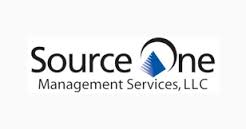
Those of us in procurement have most likely seen the ebb and flow of priority placed on our function as business and economic conditions have shifted over the years. When markets are crunched and spending and production are down, procurement rides in like a knight in shining armor to slash costs and keep the business afloat. While it’s great to be the hero, this can be exhausting for staff and is generally unsustainable. Procurement leaders need to take off their buying hats (and borrow a few tips from the supplier sales reps they speak to on a daily basis) to sell the importance of procurement for any and all business conditions.
Contraction: Sales are down This is the easiest value proposition, right? C-level executives start emphasizing the need to cut costs and consequently elevate the procurement function to all-time-high importance. Sales revenue is decreasing and the simple way to keep profits stable, or at least not drop as drastically, is to decrease costs. Business units start falling in line as penalties and processes related to rogue spend and non-essential expenditures become more stringent. During this time, procurement needs to work with business units to standardize on key contracted suppliers and review what constitutes essential versus non-essential spend. Going beyond cutting costs, procurement is also in a position to identify additional revenue channels. For example, in the manufacturing world there may be opportunity to reduce inventories of excess raw material supply that can be sold back to the market, ramp up scrap recovery and selling efforts, or perhaps take advantage of unused facilities to sell electricity back to the grid. Regardless of industry, take the opportunity to identify excess within the supply chain and consider alternative uses and markets outside of the traditional use case.
Recovery: Sales are stable When coming back from a few bad years of sales, the focus on the role of procurement starts to slip a bit; often times the goal in this period is to keep costs stable and prevent suppliers from raising prices. Procurement needs to ensure that supply is ready as purse strings begin to loosen and production or sales increase. During recovery, procurement has the opportunity to examine where efficiencies and improved ways of sourcing different commodities can be introduced. For example, if the Free On Board (FOB) point for materials or products is at the supplier’s warehouse or facility, freight optimization can go a long way in ensuring that site locations are aligned with suppliers locations in the most efficient manner. Also, while pricing pressure is not as high, it is a good time to bolster your quality and specification testing to ensure service levels and specifications are being met, especially as the volumes being purchased begin to increase.
Boom: Sales are up During the boom period, procurement tends to get put on the back burner at any organization; compliance becomes less important and management’s focus on the department dwindles as long as costs aren’t increasing comparative to sales growth. While there may be less pressure on the sourcing function during these prosperous times, procurement can continue to drive supplemental value to the organization. By doubling-down on savings efforts and sourcing compliance, profit potential can grow exponentially. While there is available budget, procurement should take a look at systems and programs that can automate and monitor these processes in order to focus the department on more strategic work. Procurement can also support the growing market by identifying opportunities to bolster supplier and consumer relationships by investing in new communications tools, spend management and supplier management tools, and consumer marketing and outreach.
As a company moves through different stages of the business cycle, its priorities as a business and the perceived value from procurement will shift. Procurement needs to portray its value internally in a way that aligns with the priorities of the organization and its position within the business cycle, e.g. don’t focus on incremental cost savings during a boom period; don’t focus on investment and supplier innovation during a period of contraction. In order to have a finger on the pulse of the business and know how to react to those changes in priorities, procurement professionals should establish a category management strategy that is aligned with the strategic goals of the company and business units that they support.
By establishing a thorough category management program and partnering with stakeholders, sourcing and purchasing activities will shift from reactive to proactive as procurement becomes an integral part of the forecasting and planning efforts. In order to gain a seat at the table, be sure to share the procurement success stories (via newsletter, case studies, lunch-and-learn sessions, etc.) with business owners and upper management across the company. Gaining the support of these two groups will make the promotion and use of procurement by other departments that much easier. The key is to begin documenting and tracking these additional efforts that procurement undertakes in order to make a clear case for why the department should always be top of mind for the organization, no matter the business conditions.
About the Author: Torey Guingrich is a Senior Project Analyst at Source One Management Services, LLC with years of experience helping global companies drive greater value from their IT and Telecommunications investments. Torey is a trusted resource for helping clients optimize their and IT and telecom infrastructure through innovative cost management solutions, implementing best-in-class contracts, and monitoring ongoing supplier performance. She is a proven asset in her abilities to leverage her deep industry knowledge and experience, mitigate risks, and deliver results.
